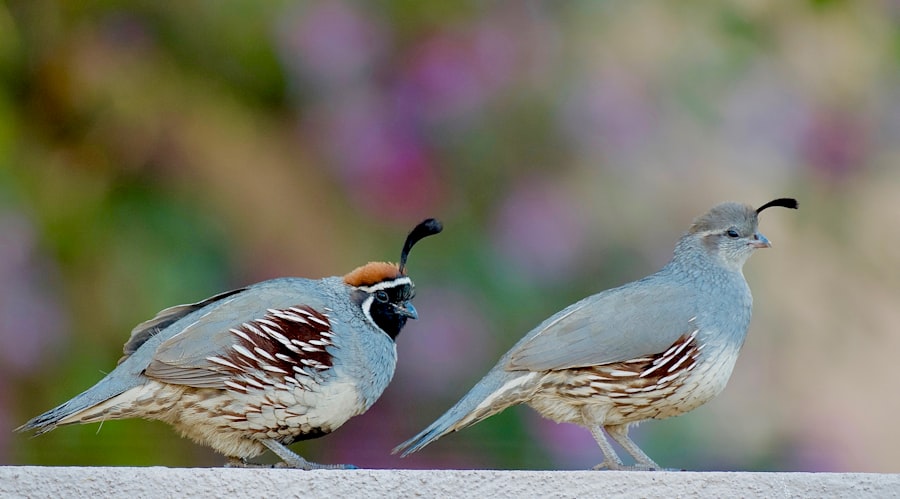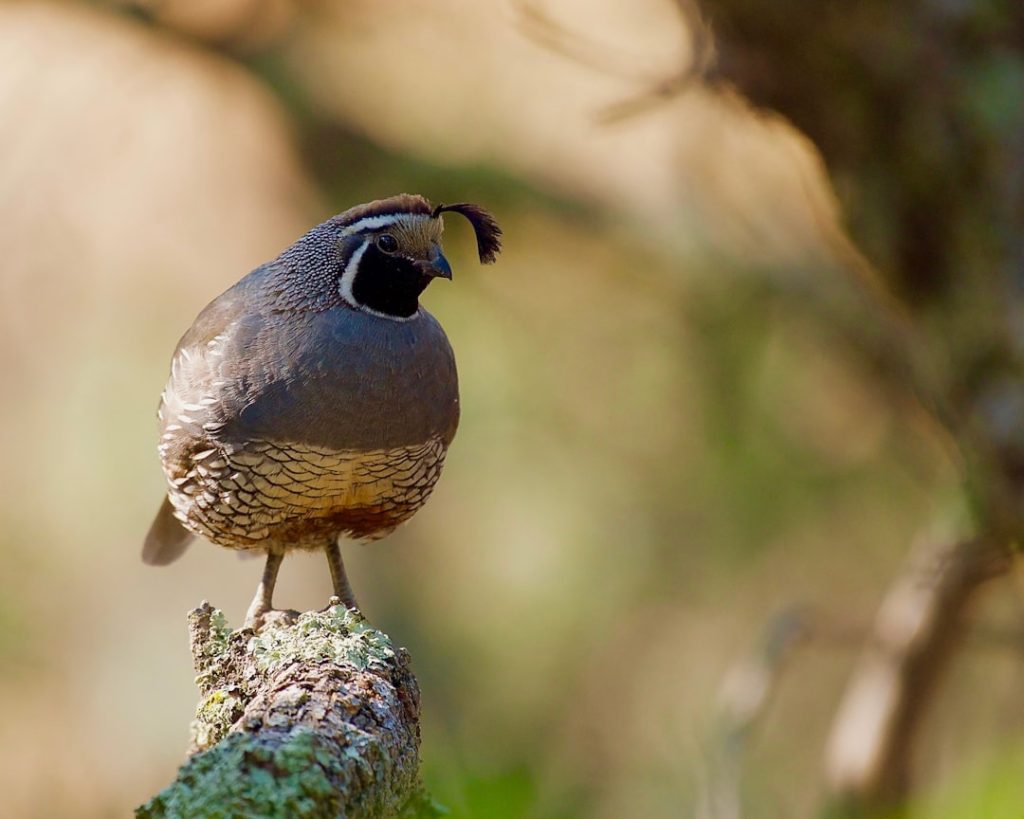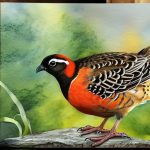Cross breeding quail involves mating different breeds of quail to produce offspring with desirable traits from both parent breeds. This breeding method is commonly used to improve certain characteristics in quail, such as egg production, meat quality, or disease resistance. By carefully selecting the parent breeds, breeders can create hybrid quail that exhibit the best traits of each breed, resulting in a more robust and productive flock.
Cross breeding quail requires a good understanding of genetics and the specific traits of each quail breed. It is important to carefully plan the breeding program to ensure that the desired traits are passed on to the offspring. Additionally, breeders must be aware of potential challenges and limitations associated with cross breeding, such as genetic abnormalities or reduced fertility in hybrid offspring. Overall, cross breeding quail can be a valuable tool for improving the overall quality and productivity of a quail flock when done correctly.
Table of Contents
Key Takeaways
- Cross breeding quail involves mating different breeds to produce offspring with desirable traits
- Benefits of cross breeding quail include improved disease resistance and better egg production
- Select the right quail breeds for cross breeding based on desired traits and compatibility
- Cross breeding techniques for quail include natural mating and artificial insemination
- Manage cross bred quail flocks by providing proper nutrition and monitoring for any health issues
- Common challenges in cross breeding quail include genetic abnormalities and difficulty in maintaining desired traits
- Conclusion: Successful cross breeding quail requires careful selection, proper management, and attention to potential challenges
Benefits of Cross Breeding Quail
Cross breeding quail offers several benefits for quail breeders looking to improve the quality and productivity of their flocks. One of the main advantages of cross breeding is the potential to create hybrid offspring with superior traits compared to the parent breeds. For example, by mating a breed known for high egg production with a breed known for meat quality, breeders can produce hybrid quail that excel in both egg laying and meat production.
Another benefit of cross breeding quail is the potential for hybrid vigor, also known as heterosis. This phenomenon occurs when the offspring of two different breeds exhibit enhanced traits, such as increased growth rate, disease resistance, or fertility, compared to the parent breeds. This can result in a more robust and productive quail flock overall.
Furthermore, cross breeding can also help to introduce genetic diversity into a quail flock, which can be beneficial for overall health and resilience. By carefully selecting parent breeds with different genetic backgrounds, breeders can reduce the risk of inbreeding and associated genetic problems in their quail flock. Overall, cross breeding quail can be a valuable strategy for improving the overall quality and productivity of a quail flock.
Selecting the Right Quail Breeds for Cross Breeding
When it comes to cross breeding quail, selecting the right parent breeds is crucial for achieving the desired traits in the offspring. Breeders should carefully consider the specific characteristics of each breed, such as egg production, meat quality, size, and temperament, and choose breeds that complement each other well. For example, if the goal is to produce hybrid quail with high egg production and good meat quality, breeders may consider mating a breed known for its prolific egg laying with a breed known for its large size and meaty carcass.
It is also important to consider the genetic compatibility of the parent breeds to ensure successful mating and healthy offspring. Some breeds may not be compatible for cross breeding due to genetic differences or incompatibilities that could result in genetic abnormalities or reduced fertility in the hybrid offspring. Additionally, breeders should consider the long-term goals for their quail flock and select parent breeds that will help them achieve those goals, whether it’s improving egg production, meat quality, or overall health and resilience.
Overall, selecting the right quail breeds for cross breeding requires careful consideration of the specific traits and genetic compatibility of each breed to ensure the successful production of hybrid offspring with desirable characteristics.
Cross Breeding Techniques for Quail
Cross breeding quail involves several techniques to successfully mate different breeds and produce hybrid offspring with desirable traits. One common technique is to use a controlled breeding program where specific parent breeds are selected based on their desired traits, and then carefully mated to produce hybrid offspring with the best combination of those traits. This method requires careful planning and record-keeping to track the lineage and traits of each quail in the breeding program.
Another technique for cross breeding quail is to use artificial insemination to control the mating process and ensure successful fertilization between different breeds. This method can be particularly useful when working with breeds that may have difficulty mating naturally due to size differences or other factors. Artificial insemination allows breeders to carefully select the parent breeds and control the genetic makeup of the offspring.
Additionally, some breeders may also use backcrossing techniques to introduce specific traits from one parent breed back into the hybrid offspring. This method can be useful for reinforcing certain desirable traits in the hybrid offspring while maintaining genetic diversity in the quail flock.
Overall, cross breeding techniques for quail require careful planning and consideration of the specific traits and genetic compatibility of each breed to ensure successful mating and production of hybrid offspring with desirable characteristics.
Managing Cross Bred Quail Flocks
Managing cross bred quail flocks requires careful attention to the specific needs and characteristics of the hybrid offspring. Breeders should closely monitor the growth rate, egg production, meat quality, and overall health of the hybrid quail to ensure that they are meeting the desired goals for the breeding program. Additionally, it is important to maintain detailed records of the lineage and traits of each quail in the flock to track their performance and make informed breeding decisions.
Furthermore, managing cross bred quail flocks also involves providing appropriate housing, nutrition, and healthcare to support the overall well-being of the birds. Breeders should ensure that the housing facilities are suitable for the specific needs of the hybrid quail, such as space requirements, temperature control, and protection from predators. Additionally, a well-balanced diet and access to clean water are essential for supporting healthy growth and productivity in the hybrid quail.
It is also important to implement a proactive healthcare program to prevent disease and maintain overall health in the cross bred quail flock. This may include regular vaccinations, parasite control, and monitoring for any signs of illness or distress. Overall, managing cross bred quail flocks requires careful attention to their specific needs and characteristics to ensure their overall health and productivity.
Common Challenges in Cross Breeding Quail

Cross breeding quail can present several challenges for breeders looking to produce hybrid offspring with desirable traits. One common challenge is genetic abnormalities or reduced fertility in the hybrid offspring, which can occur when certain parent breeds are not genetically compatible or have incompatible traits that result in health problems or reproductive issues in the offspring. This can be particularly challenging when working with breeds that have different sizes or physical characteristics that may not be well-suited for successful mating.
Another challenge in cross breeding quail is maintaining genetic diversity while reinforcing desirable traits in the hybrid offspring. Breeders must carefully balance the need to introduce new genetic material into their flock while also selecting for specific traits that contribute to overall productivity and health. This requires careful planning and consideration of the long-term goals for the quail flock to ensure that genetic diversity is maintained while improving specific traits through cross breeding.
Furthermore, managing cross bred quail flocks also involves providing appropriate housing, nutrition, and healthcare to support the overall well-being of the birds. Breeders should ensure that the housing facilities are suitable for the specific needs of the hybrid quail, such as space requirements, temperature control, and protection from predators. Additionally, a well-balanced diet and access to clean water are essential for supporting healthy growth and productivity in the hybrid quail.
It is also important to implement a proactive healthcare program to prevent disease and maintain overall health in the cross bred quail flock. This may include regular vaccinations, parasite control, and monitoring for any signs of illness or distress. Overall, managing cross bred quail flocks requires careful attention to their specific needs and characteristics to ensure their overall health and productivity.
Tips for Successful Cross Breeding Quail
Cross breeding quail can be a valuable tool for improving the overall quality and productivity of a quail flock when done correctly. To ensure successful cross breeding, breeders should carefully select parent breeds based on their desired traits and genetic compatibility. It is important to plan a controlled breeding program and use techniques such as artificial insemination or backcrossing to achieve the desired goals for the hybrid offspring.
Managing cross bred quail flocks requires careful attention to their specific needs and characteristics, including housing, nutrition, healthcare, and overall management practices. By closely monitoring the performance of the hybrid offspring and maintaining detailed records of their lineage and traits, breeders can make informed decisions to support their overall health and productivity.
Overall, successful cross breeding quail requires a good understanding of genetics, careful planning, and proactive management practices to achieve the desired goals for improving the overall quality and productivity of a quail flock through cross breeding.
If you’re interested in learning more about the benefits of cross breeding quail, you might also want to check out this informative article on whether quails sit on their eggs. Understanding the natural behaviors of quails can be essential when it comes to successful breeding and raising of these birds.
FAQs
What is cross breeding quail?
Cross breeding quail refers to the practice of breeding quail from different genetic lines or breeds in order to produce offspring with specific desired traits. This can involve breeding quail of different colors, sizes, or egg-laying abilities.
What are the benefits of cross breeding quail?
Cross breeding quail can result in offspring that exhibit hybrid vigor, which can lead to improved growth rates, disease resistance, and overall health. It can also allow quail breeders to create new and unique combinations of traits that are not present in purebred quail.
What are some common cross breeds of quail?
Some common cross breeds of quail include the jumbo Coturnix quail, which is a cross between different strains of Coturnix quail to produce larger birds, and the Pharaoh Coturnix quail, which is a cross between wild-type and domesticated Coturnix quail.
How do you cross breed quail?
Cross breeding quail involves selecting parent birds with desired traits, such as size, color, or egg production, and mating them to produce offspring with a combination of these traits. Careful selection of parent birds and monitoring of offspring is necessary to achieve the desired results.
Are there any potential challenges or risks associated with cross breeding quail?
One potential challenge of cross breeding quail is that the resulting offspring may not always exhibit the desired traits, and it can take several generations of selective breeding to stabilize the desired traits. Additionally, there may be concerns about maintaining genetic diversity and avoiding inbreeding when cross breeding quail.
Meet Walter, the feathered-friend fanatic of Florida! Nestled in the sunshine state, Walter struts through life with his feathered companions, clucking his way to happiness. With a coop that’s fancier than a five-star hotel, he’s the Don Juan of the chicken world. When he’s not teaching his hens to do the cha-cha, you’ll find him in a heated debate with his prized rooster, Sir Clucks-a-Lot. Walter’s poultry passion is no yolk; he’s the sunny-side-up guy you never knew you needed in your flock of friends!







